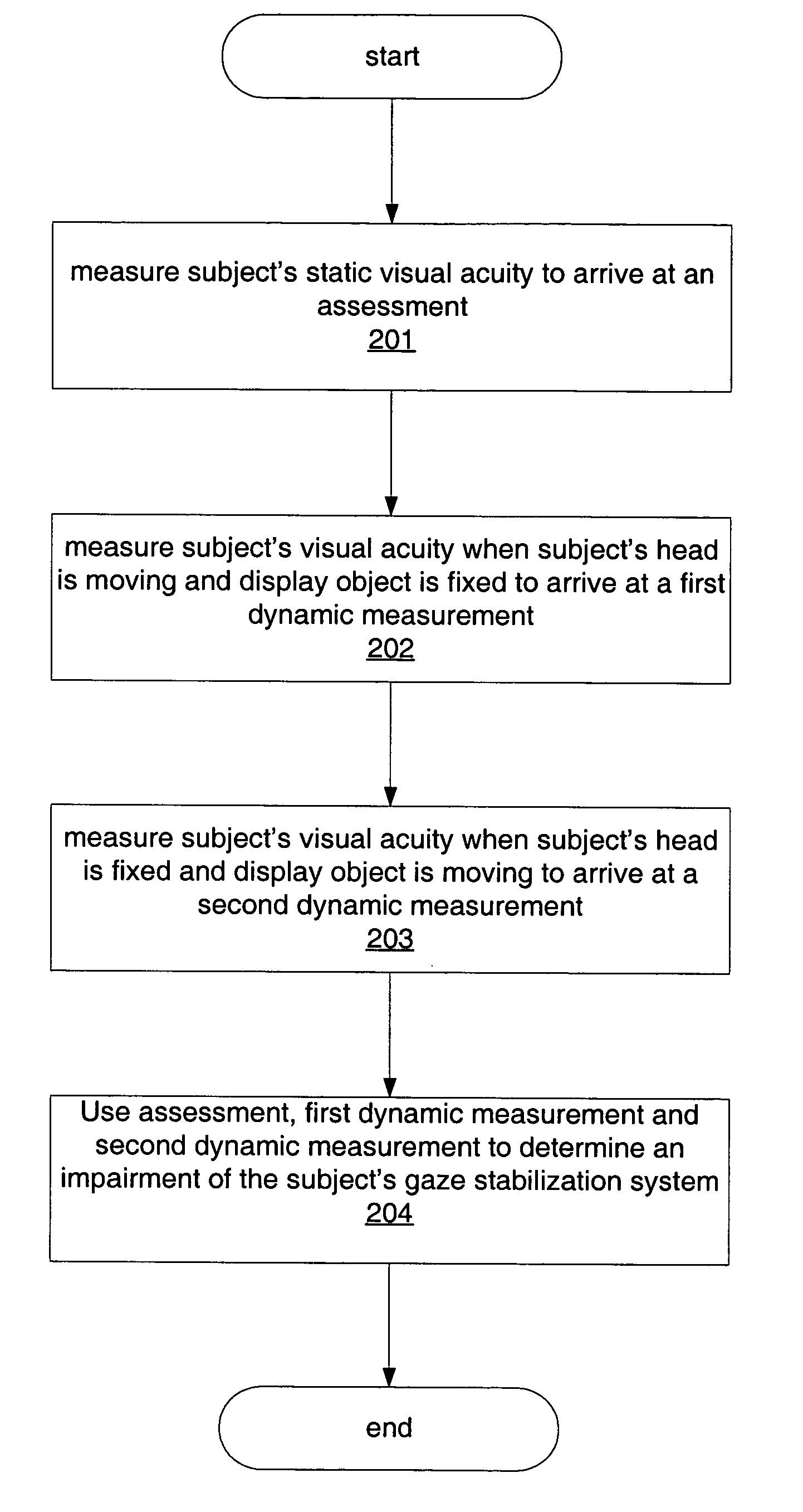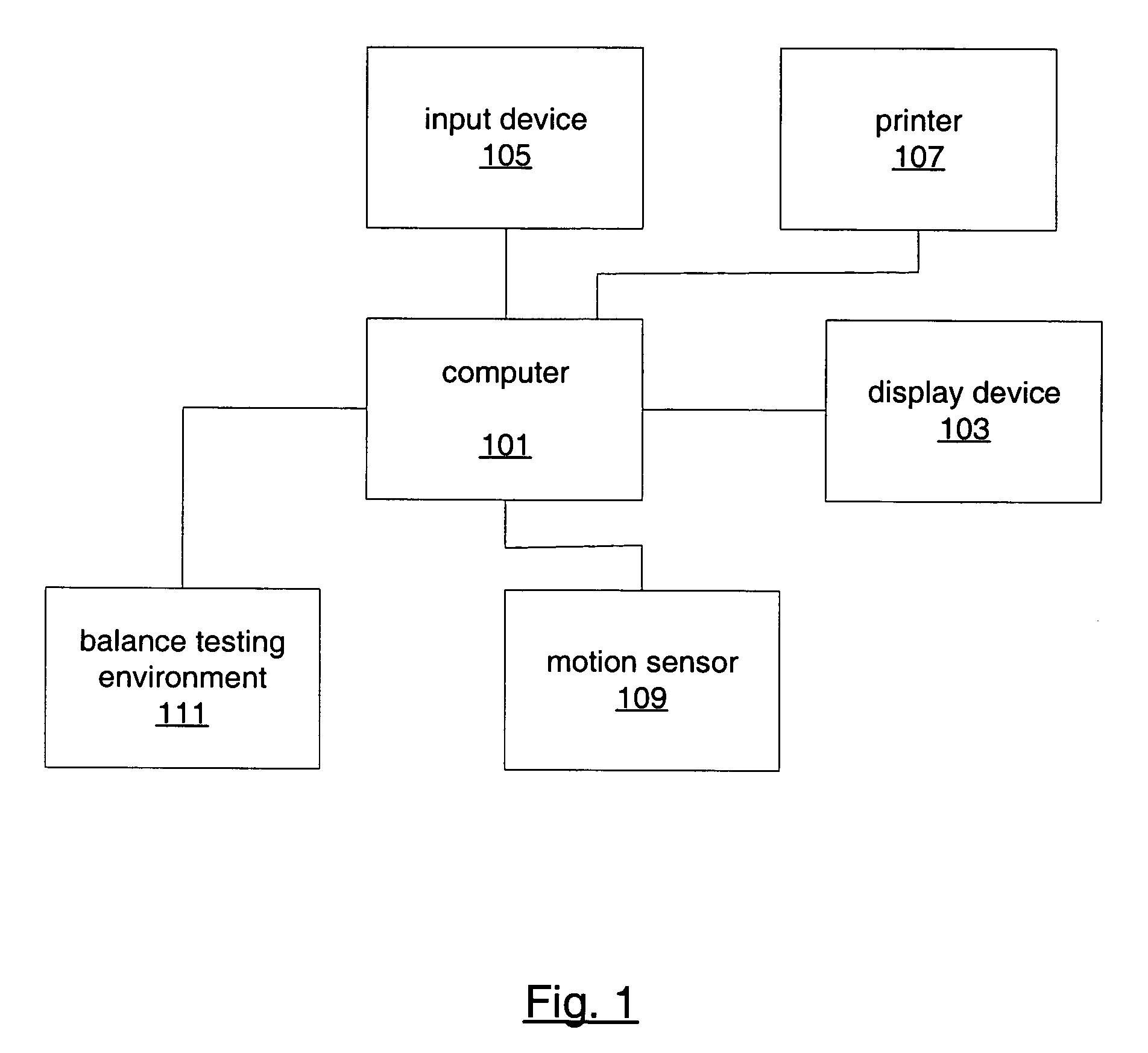Isolating and quantifying functional impairments of the gaze stabilization system
a gaze stabilization and functional impairment technology, applied in the field of gaze stabilization, can solve the problems of blurred objects, blurred objects, and often fully solving the underlying pathological manifestations of balance problems
- Summary
- Abstract
- Description
- Claims
- Application Information
AI Technical Summary
Benefits of technology
Problems solved by technology
Method used
Image
Examples
Embodiment Construction
[0044] The present invention involves new methods and devices for isolating and quantifying functional impairments of the gaze stabilization system that negatively impact a subject's ability to maintain their visual orientation and acuity while the subject and / or surrounding visual objects are moving. This is accomplished by combining assessment information derived from three test procedures: (1) at least one measure of an subject's static visual acuity, (2) one or more measures of an subject's visual acuity while the head moves in accordance with a prescribed protocol and the surrounding visual objects remain stationary, and (3) one or more measures of an subject's visual acuity while the head is stationary and surrounding objects move in accordance with a prescribed protocol. Additional embodiments of the invention combine one or more of the above three procedures with additional procedures in which the subject stands freely in the presence of perturbations to postural stability o...
PUM
 Login to View More
Login to View More Abstract
Description
Claims
Application Information
 Login to View More
Login to View More - R&D
- Intellectual Property
- Life Sciences
- Materials
- Tech Scout
- Unparalleled Data Quality
- Higher Quality Content
- 60% Fewer Hallucinations
Browse by: Latest US Patents, China's latest patents, Technical Efficacy Thesaurus, Application Domain, Technology Topic, Popular Technical Reports.
© 2025 PatSnap. All rights reserved.Legal|Privacy policy|Modern Slavery Act Transparency Statement|Sitemap|About US| Contact US: help@patsnap.com



